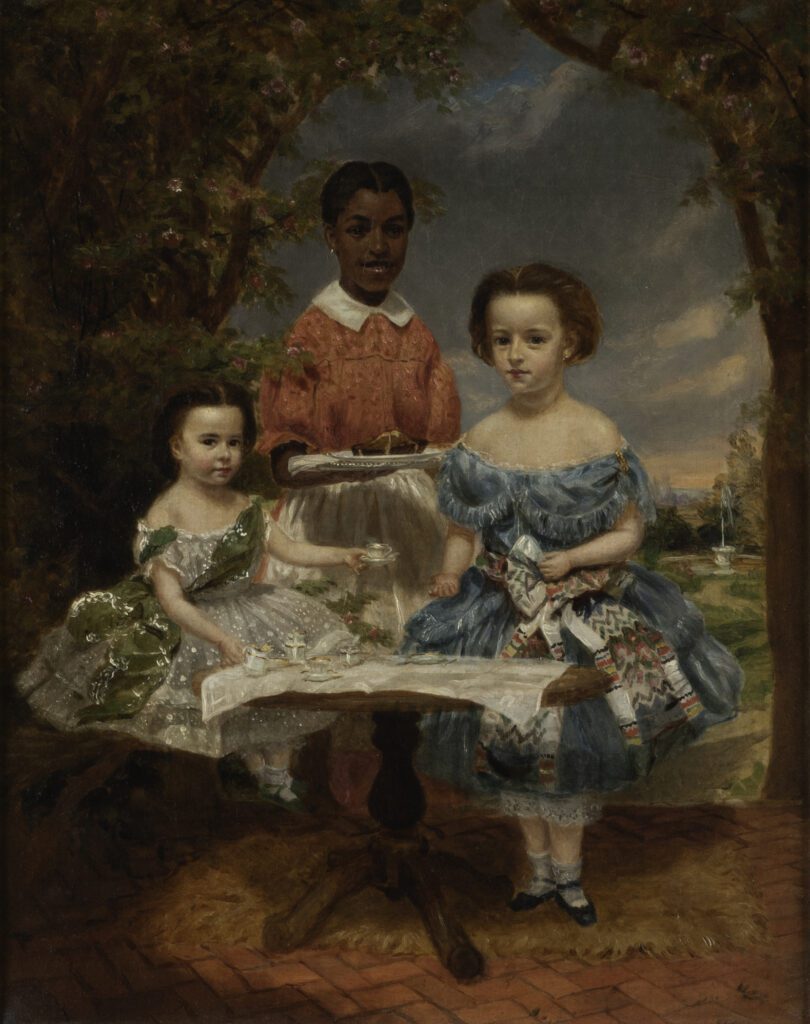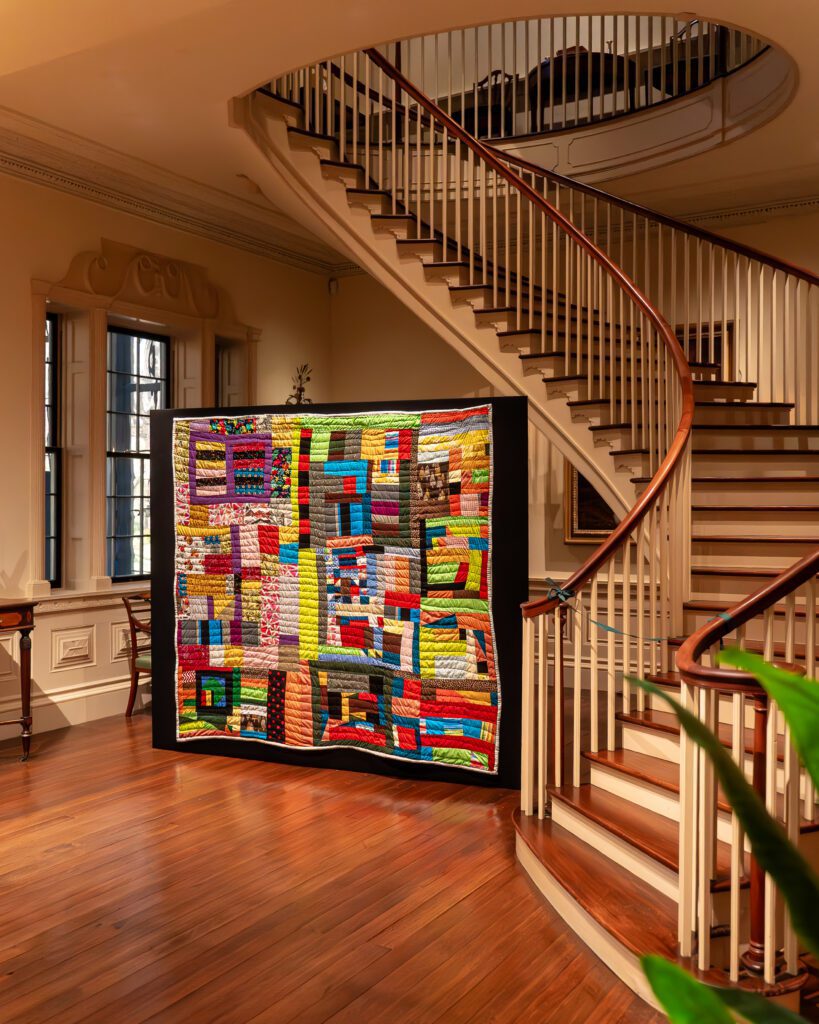Many visitors to Winterthur are surprised to learn that our collection is continually expanding with new acquisitions. Contrary to the perception of museum pieces as merely “old and dusty,” our collection encompasses a dynamic range of items, including contemporary and historically significant pieces.
“Winterthur’s collection is far more expansive than many people realize,” says Alexandra Deutsch, director of collections at Winterthur Museum. “While the museum is the home of some of the finest 18th- and 19th-century decorative arts made and used in America, Henry Francis du Pont’s visionary collecting created a foundation that has allowed Winterthur’s curators to expand the collection in innovative and inspiring ways.
“Today, guided by a collections policy that acknowledges the global nature of the collection, acquisitions that significantly expand Winterthur’s ability to share complete histories with our visitors, students, and scholars are a top priority. This selection of objects provides a glimpse of recent acquisitions, which document histories previously untold in Winterthur’s galleries and museum rooms.”
A Glimpse into Baltimore’s Free Black Community
One of the museum’s recent acquisitions is an 1857 oil painting in remarkable condition depicting an identifiable free Black member of the regional Baltimore community. This painting is on display now in the Galleries at Winterthur. We wrote extensively about the painting earlier this year.

Researching a Captain
Another fascinating addition is the oil painting titled Don Juan de Dios de Parreno y Pardo, likely created between 1800 and 1830. The painting’s title is inscribed in the lower left corner of the portrait.
“An arresting portrayal of a dark-haired naval captain, Don Juan de Dios de Parreno y Pardo intimates the history of maritime politics of Europe and the Americas in the early part of the 1800s,” says Kedra Kearis, Winterthur’s associate curator of art and visual culture. “Seated at a table with navigational tools spread over an indeterminate map, the confident Pardo gestures to his offshore frigate that bears the pre-Republic flag of Spain.
“We look forward to interpreting this painting beginning with conservation efforts,” Kearis says. “Visible under black light, the background of the portrait has coats of arms just below the surface layer.”
These images may unlock the painting’s secrets or lead Kearis to further insights about the man in the painting. She poses several questions: “Who is this captain? Is his vessel heading out to sea or returning? What does this portrait tell us about Spain’s presence in the Americas?”
Currently housed in our Research Building, the painting is under scholarly examination to uncover its secrets. For now, this blog is the only place you can view it. Once enough research is completed, it could be displayed in the Galleries.
“Sure to intrigue visitors, this picture joins Winterthur’s strong holdings of early 19th-century portraits painted in the U.S.,” Kearis adds. “It allows for important conversations about the exchange of art traditions across the Atlantic and contact between Spain and indigenous people of the Americas.”

A Quilting Legacy
Winterthur has also acquired a quilt by mother and daughter artists Sharon and Jemica Williams from Gee’s Bend, Alabama. Sharon learned to quilt from her mother and grandmother, passing the tradition to her daughter, Jemica.
Gee’s Bend quilters are renowned for their innovative use of available materials, such as sacks and clothing, to create quilts that provided comfort to their families. They trace their roots to enslaved ancestors forcibly relocated from a plantation in Halifax County, North Carolina.
The Montmorenci plantation in a neighboring county was once the home of the staircase and architecture that can now be found in Montmorenci Stair Hall at Winterthur Museum, Garden & Library. Enslaved and free individuals at Montmorenci played an active role in the design, construction, and everyday use of this staircase.
The Gee’s Bend quilt made by Sharon and Jemica is juxtaposed with the staircase, cementing a connection between these three separate regions. The quilt is part of the Winterthur’s current exhibition, Transformations: Contemporary Artists at Winterthur.
“This quilt by Sharon and Jemica Williams is the first quilt by a known Black designer and maker to enter Winterthur’s collection,” says Alexnadra Deutsch. “The design is a fresh interpretation of the ‘My Way’ style of freeform piecing and quilting, for which the quilters of Gee’s Bend, Alabama, descendants of enslavement, are famous. Sharon Williams, the designer and maker, says she ‘puts her colors together, puts the quilt together just how it goes.’ She ‘wants people to see these colors and admire them’ and that would bring her joy.”


A Golden Addition
Ann Wagner, Winterthur’s curator of decorative arts, highlights a 1915 gilded silver hot chocolate set by Gorham Manufacturing Company, Providence, R.I., and retailed by Shreve, Treat & Eacret, San Francisco, Calif., as a notable recent acquisition.
“California’s state flower, the golden poppy (the ‘cup of gold’ or ‘copa de oro’ in Spanish) is the dominant inspiration for each vessel of this gilded beverage bouquet,” Wagner says. “It was a special commission created for a prominent, patriotic Californian, Anita May Baldwin (1876–1939). Baldwin lived in Arcadia on the vast Anoakia Ranch that she inherited from her father Elias J. “Lucky” Baldwin, but she also socialized and shopped in San Francisco. This luxurious set was likely designed with Anita Baldwin’s input and created in Rhode Island by Gorham, whose connection with the Lenox Ceramic Art Company provided the fitted white porcelain liners for the dainty silver poppy cup frames.”
The chocolate set’s history is actively being researched. In the meantime, the set is now on view in the museum’s Galleries.
Winterthur’s ongoing commitment to expanding and diversifying its collection ensures that visitors, students, and scholars can engage with a broad and inclusive array of historical narratives.
